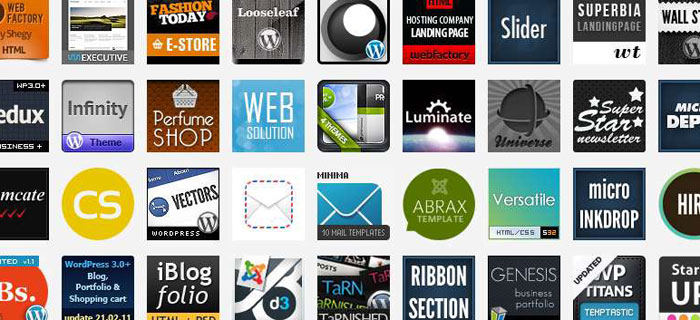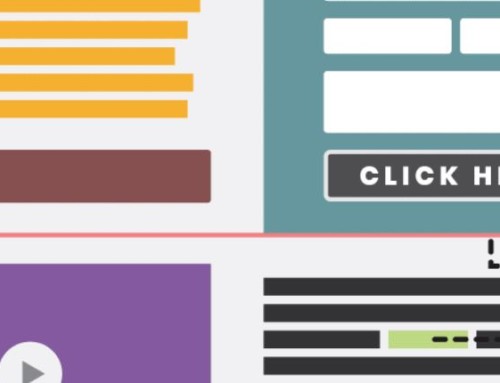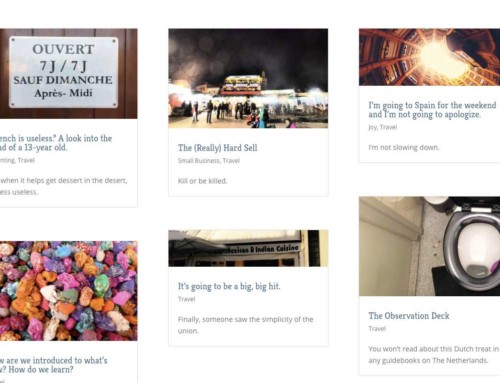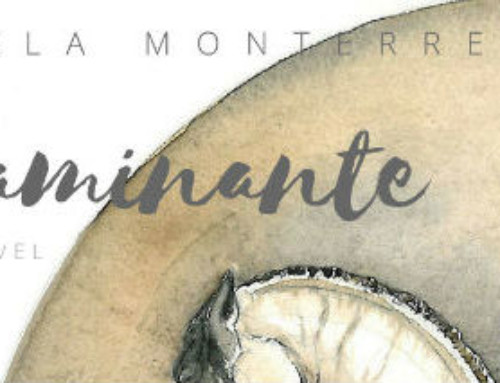- What’s a WordPress Theme?
- New to WordPress?
- WordPress Pages, Posts, and Categories
- WordPress Theme Reconnaissance
- A Simple WordPress Glossary
If you’re just getting started with WordPress, one of the trickiest decisions to make is what theme you want to use.
What’s a WordPress theme?
WordPress.org says a theme is “a collection of files that work together to produce a graphical interface with an underlying unifying design for a weblog.” Clear as mud? How about this:
A theme is a quick and easy way to make your blog
look a certain way, and do certain things.
Once upon a time, before themes were invented, human beings (called nerds) had to write code to manage every little part of a website, telling it what colors to use, where the words and photos should be positioned, and so forth. Having a website required a lot of time and know-how (or a lot of money so you could hire a roomful of nerds with know-how).
Today we can choose from thousands of pre-configured themes, because someone has already thought out a design, done the coding, tested it, and packaged it up as a “theme.” That’s the good news.
So many choices:
The other news is that there are so darned many themes that the choices are overwhelming. (I googled “wordpress themes” and got 52 million results.) Some people develop a theme or two for fun; others develop a whole suite of themes and make a business out of selling them. Themes range in price from free-forever to more than $200/year. And price isn’t the only variable…
Specialized markets: There are themes especially for realtors, that make it easy to showcase houses for sale … themes for bands, that make it easy to upload music … themes for photographers, that are centered around a photo gallery … themes for writers, that are designed to emphasize the words on a page rather than slick images. There are even themes for selling mobile apps.
Look and feel: There are cute themes with butterfly backgrounds and sleek ones with metallic effects. There are themes with one, two, or three columns; and e-zine themes that give your blog a lively magazine-style look. Some themes let you switch background colors, or the configuration of your blog’s columns, so you can change the look of your blog quickly and easily.
Technical issues: Some themes are well-designed, work well, and have excellent technical support teams that are busy tweaking the theme to improve it. Other themes were designed by a guy in a garage who wasn’t very good at what he did and hasn’t been seen for years. Buyer beware.
Customizing a theme:
The person who developed any particular theme spent a lot of time figuring out how it would look and work: how the page would be laid out, what features would be included, what colors and fonts would be used, and so forth. Lots of decisions have already been made by the time a theme is available for your use. That means you don’t need to be a web designer or programmer.
It also means there are some things about a theme that you can’t really change.
Yes, themes can be customized. In fact, colors, fonts, and images are fairly easy to change. Other changes can be time-consuming (because they require programming—remember those nerds?) and expensive. Here’s a more in-depth discussion of customization. (link to come)
So how do I choose a theme?
This might be the toughest decision you make about your website. Fortunately, you’re allowed to change your mind: you can switch to a different theme without losing the content (articles, photos, etc.) you’ve posted. That’s pretty neat.
But the closer you can come to choosing a theme that fits your needs to begin with, the easier your life will be. In order to choose your theme, you first need to know what you’re looking at. So let’s talk about pages, posts, and categories, the basic building blocks of your blog.







[…] What’s a WordPress Theme? What is a theme? Types of themes. Customizing a […]
[…] What’s a WordPress Theme? What is a theme? Types of themes. Customizing a […]
[…] Read more […]
[…] are quick and easy ways to make a website look a certain way and do certain things. Basically a template for how the site looks and […]
Watch All Episodes